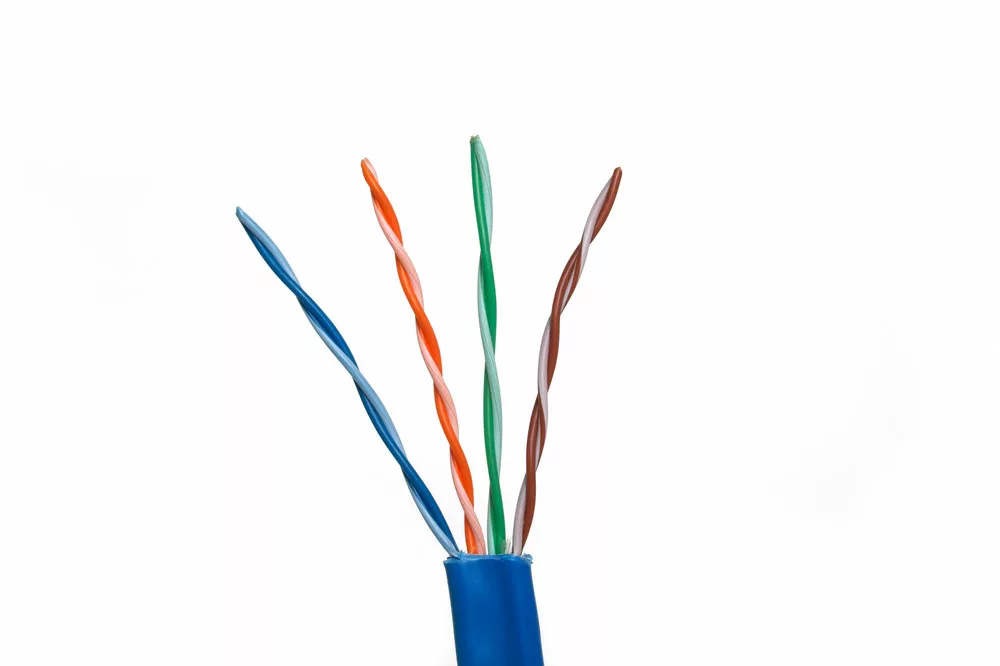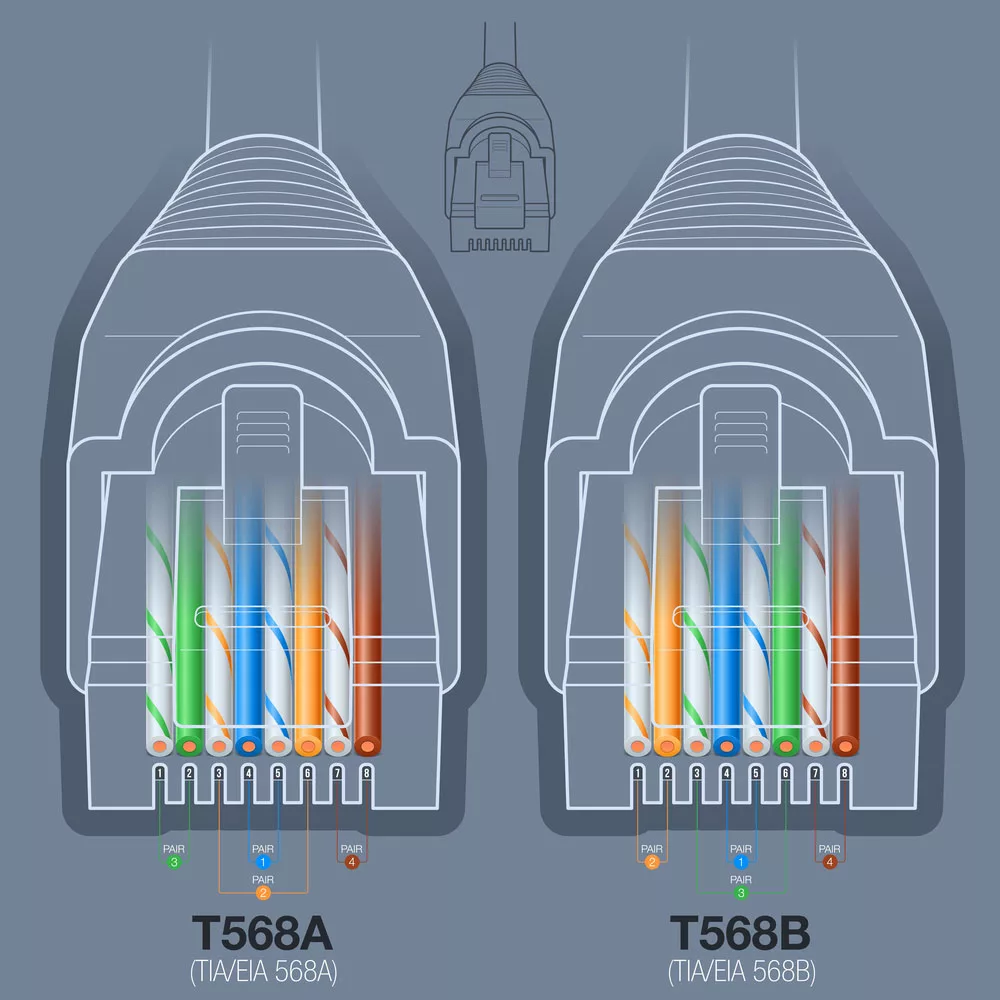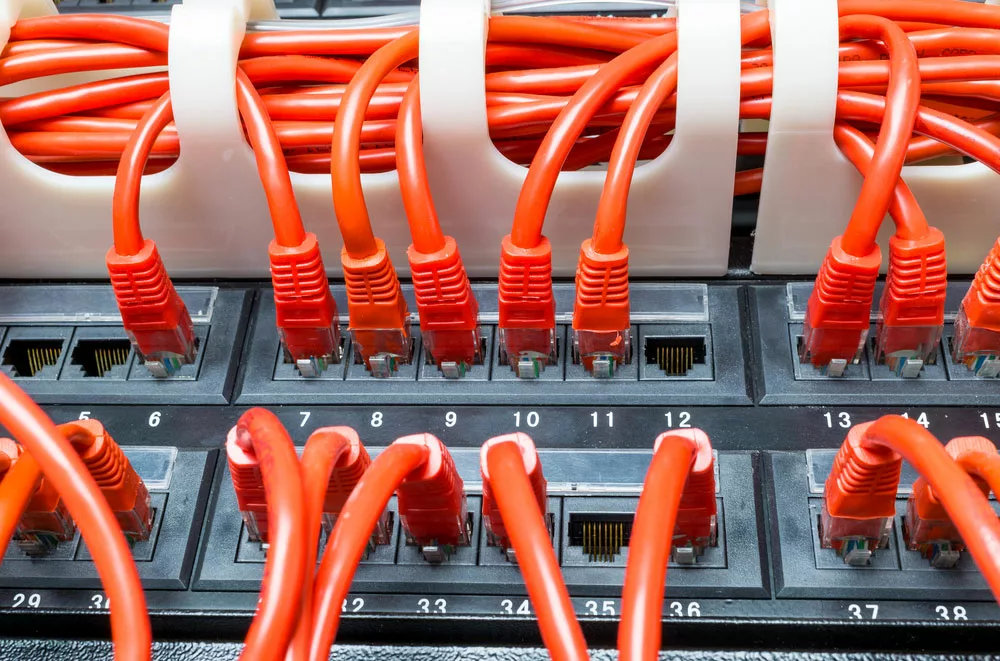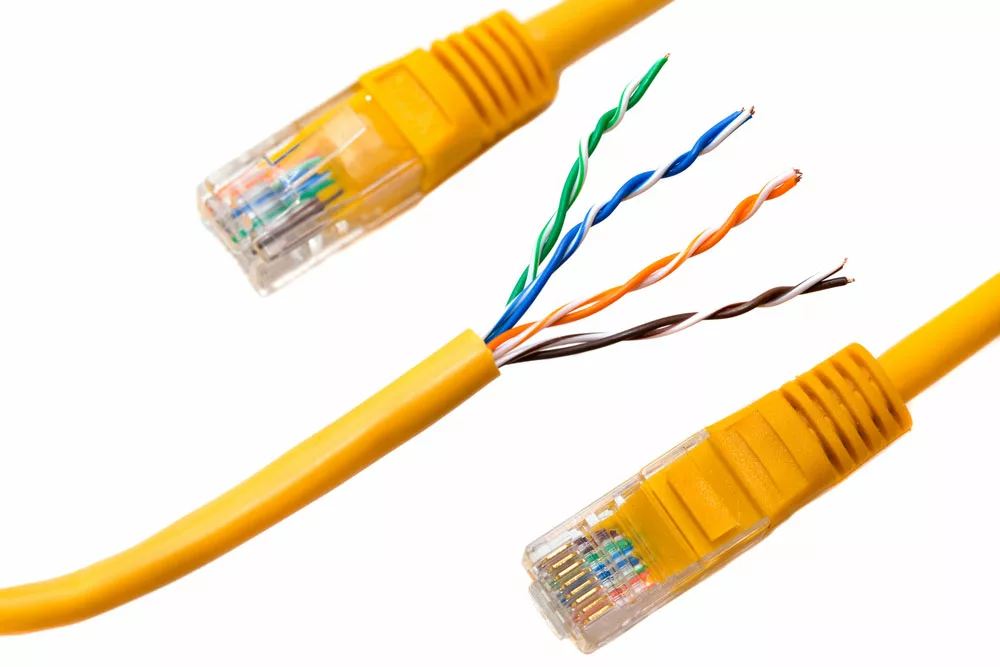About Cat5 vs. Cat6 Ethernet Cable, Choosing an Ethernet cable can be difficult because they are continually improved to increase bandwidth.
Your internet speed can significantly change depending on the Ethernet cable you choose. When buying an Ethernet cable, the difference between Cat5 and Cat6 cables perplexes most people.
While Cat6 cables are comparatively better than Cat5, it doesn’t mean they will suit your needs. This article will help identify the Ethernet cable that will suit your needs.
Table of Contents
- What is a Cat5 Ethernet Cable?
- What is CAT6 Cable?
- Cat5 vs. Cat6: Similarities
- Cat5 vs. Cat6: Differences
- Cat5 vs. Cat6: Which to use?
- Conclusion
What is a Cat5 Ethernet Cable?
A Cat5 or category 5 network cable is an Ethernet cable comprising four twisted pairs of copper wire connected by an RJ45 connection.
Home and business networks can use the Cat5 cable, offering data transmission rates of up to 100mbps.
You’ll find two types of Cat5 cables: solid and stranded. Solid is used in professional buildings because it supports greater Ethernet usage distances.
Stranded cables are more flexible and preferable at shorter distances, so you can use them to connect two pieces of electronic equipment.
A Cat5 cable should not be longer than 100 meters, which could cause network problems such as data package loss and slowed data transmission.
Also, signal interference is common with Cat5 over long distances because of the loose construction of copper wiring inside the cable.
The trick to using Cat5 cabling for gigabit Ethernet is only to cover short distances.
What is Cat5e Cable?
These cables feature certain additional benefits than the Cat5 cables. They are an upgrade over the older Cat5 cables, with the “e” standing for enhanced.
They were the first Ethernet cables to support 1Gbps speed, a minimum for any network today.
Cat5e cables have four copper wires twisted together to lessen electromagnetic interference, allowing for a gigabit network across 100-meter distances between segments.
Compared to the Cat5 standard, the Cat5e has more tightly twisted wiring. So, you will get ten times quicker speeds and more capacity to cover distances without crosstalk.
It also allows higher data transmission rates and lessens interference from other connections.

Cat5e
What is CAT6 Cable?
Cat6 cable came a few years after Cat5e was released and became an industry standard for network cabling.
This standardized twisted cable for Ethernet is the 6th generation used in residential and commercial networks. You use it primarily in gigabit Ethernet-based computer networks because of being backward compatible with Cat5 cables.
Computer networks that send data at 1000 Mbps or more use Cat6 cables. It features four sets of copper wires used for data transmission.
The cable can be stretched to 100 meters and speeds up to 10Gbps when running less than 55m. It also has improved crosstalk and attenuation protection than the earlier twisted pair cable versions.
It’s an upgraded version of Cat5e cables that can transmit up to 250 MHz of data at its highest rate.
You can terminate the Cat6 Ethernet cable using a keystone Jack or an RJ45 connector.
CAT6A Cable
The CAT6A features high-performance parameters and a maximum length of 100 meters for 10GBASE-t. It is the most recent iteration of gigabyte Ethernet cabling, with the letter a denotation standing for augmented.
This standard cable increases data transmission bandwidth from 250 to 500 MHz, offering higher dependability and transmission speeds across longer cable distances. It also reduces the possibility of crosstalk interference.
Unlike most Cat6 cables, the CAT6A cable is often insulated, making it perfect for industrial applications where additional interference can be a concern.
Cat5e and Cat6 cables are both compatible with CAT6A Ethernet cables.

Cat 6a cable
Cat5 vs. Cat6: Similarities
Cat5 and Cat6 cables often confuse people when using a cabling system, for they share many similarities.
| CAT5 /Cat5e /CAT6 Ethernet /CAT6A | |
| Performance standards | The first similarity between Cat5 and Cat6 cables is their compliance with performance requirements for each ANSI/TIA Category. Each cable complies with the performance standards in the maximum length that determines cable performance. You will find that both cables perform well at a maximum length of 328 feet. Yet, Cat6 must meet stricter performance than Cat5. |
| Function | They have similar functions in that you use them to connect devices like printers, routers, network switches, and computers. |
| PoE support | Each cable supports up to 90W of 802.3af/at/bt PoE/PoE+/PoE++ |
| Jacket Rating | Regarding jacket rating, both Cat5 and Cat6 cables have outer jacket designs. They only differ depending on where you plan to install the cable. For example, you will get a CMR or riser-related jack rating for regular interior usage. If you need outdoor UV protection and direct burial use, there is the CMX rating. You can find more info about each cable’s jacket ratings by looking at the cable. |
| Shielding Type | You can find the Cat5 and Cat6 cables in shielded or unshielded form. Apply shielded cables when environmental interference may pose an issue while using unshielded cables for general use. |
| Conductors | A Cat5 or Cat6 cable features four twisted pairs of eight color-coded wire conductors. |
| Termination | Using the common LAN applications, you can terminate Cat5e and Cat6 to the T568A or T568B color coding standards. |

Network cable connector wiring diagram
Cat5 vs. Cat6: Differences
Each cable meets the Category of performance standards established by ANSI/TIA. However, the maximum network speed of each cable can vary depending on the construction.
The table outlines the distinctions between Cat5 and Cat6 cables to identify the best option for your application.
| CAT5 | Cat5e | CAT6 | CAT6A | |
| Pricing | Cat5 will be roughly 30% cheaper than CAT5e. | Depending on the manufacturer, this cable ranges from $0.20 to $0.30 per foot. | Depending on the manufacturer, it costs about 20% more than Cat5e cables. The cost averages $0.40 to $0.60 per foot. | The price varies by manufacturer and is about 30% higher than Cat6 cables, averaging $0.50 to $0.85 per foot. |
| Max Frequency | 11MHz | 100MHz | 250MHz | 500MHz |
| Crosstalk | Cat5 doesn’t have a spline to reduce internal pair-to-pair crosstalk. | Cat5e has more tightly twisted wiring to reduce crosstalk. | Cat6 has a plastic spline at the center of the cable structure that separates the conductor pairs, reducing internal crosstalk in the cable. | More durable sheathing in CAT6A lowers foreign crosstalk and boosts the signal-to-noise ratio compared to Cat6. |
| Theoretical Data Transfer Speeds | 10 BASE-T100 BASE-T for Fast Ethernet | 10 BASE-T100 BASE-T for Fast Ethernet1000 BASE-T for Gigabit Ethernet | 10 BASE-T100 BASE-T for Fast Ethernet1000 BASE-T for Gigabit Ethernet10G BASE-T for 10 Gigabit Ethernet | 10 BASE-T100 BASE-T for Fast Ethernet1000 BASE-T for Gigabit Ethernet10G BASE-T for 10 Gigabit Ethernet |
| Max Speed | 100mbps up to 100 meters or 328 feet | 1Gbps up to 100 meters or 328 feet | 1Gbps(up to 100 meters)/10Gbps (up to 55 meters) | 10Gbps up to 100 meters/328 feet |
| Standard Gauges in Conductors | 24-26 AWG | 24-26 AWG | 22-24 AWG | 22-24 AWG |

Rows of network cables connected
Cat5 vs. Cat6: Which to use?
If you have to choose between Cat5 and Cat6 cables, you must consider several factors.
When to choose Cat5e
Choose the Cat5e cable if you plan to use them in residential and small business networks. It is an ideal choice if you don’t expect an Ethernet faster than 2.5 GBASE-T.
Compared to Cat6, you will find the Cat5e Ethernet cable to be lighter and thinner due to loose twists in the wire and the lack of plastic insulation surrounding it.
Its design without a spline also makes it easy to terminate. Also, choose Cat5 if the price is your top priority.
When to choose Cat6
In comparison, choose Cat6 cables if you intend to apply them in big enterprise networks and high-performance applications.
You can use them for normal home network needs, such as playing video games or watching a movie in high definition without interruptions.
They are the ideal cables for applications that need faster speeds and large capacities. In addition, Cat6 is a superior option to Cat5 for value versatility and future development.
The Cat6 cables are also a better choice if you don’t mind spending extra on an Ethernet cable.
Cat5e is Fine for Most, But Cat6a is Still Better
Cat5e has advantages when used for home networks. You can easily install it in confined spaces. Today, almost every networking device, such as routers, switches, and modems, comes with Cat5e cables as a standard.
Therefore, if you’re content with your internet speed, you can use Cat5e cable for your networking needs.
Still, Cat6a cables are better overall when looking to cable your network at home or in the office. It’s a wonderful option if you want better internet connections as it offers higher speed.
A shielded Cat6 cable has more insulation that reduces crosstalk. Since the insulation makes the cable thicker, it lessens electromagnetic interference with your communication channels.
Apart from less crosstalk, you enjoy more bandwidth with Cat6a cables. It has a bandwidth capacity of up to 500 MHz, which operate incredibly fast over long distances, up to 100 meters.
They will transport data speeds of up to 10Gbps for business.

Ethernet wire cable yellow patch
Conclusion
When choosing between Cat5 and Cat6 Ethernet cables, consider several factors. We have explained the key performance, covering the similarities and differences between the two cables.
And you will be better placed to decide which suits you. Overall, Cat6 offers better network performance than Cat5 and will be a better option for your home. Please don’t hesitate to ask us any questions about the differences or our products.
